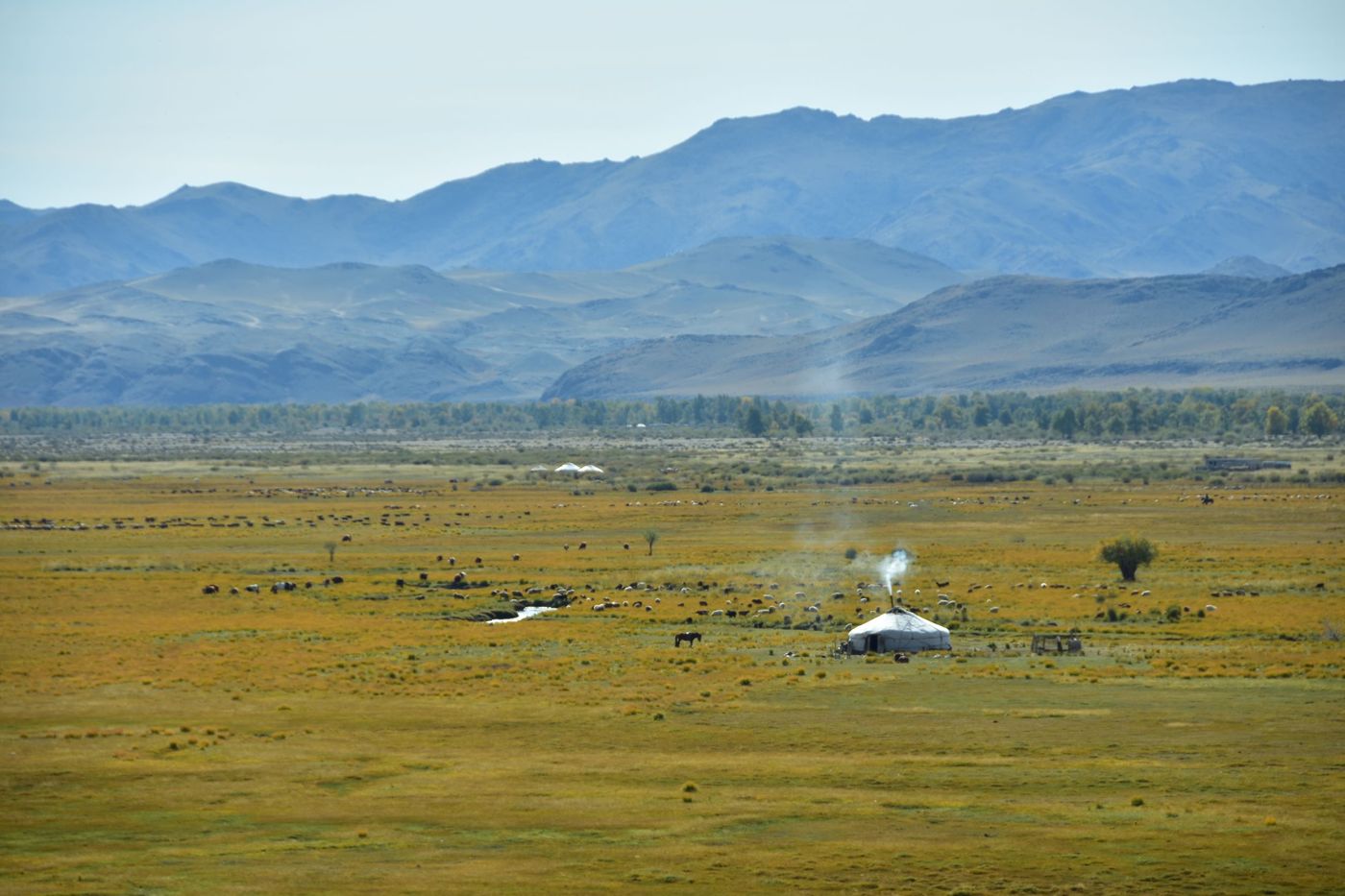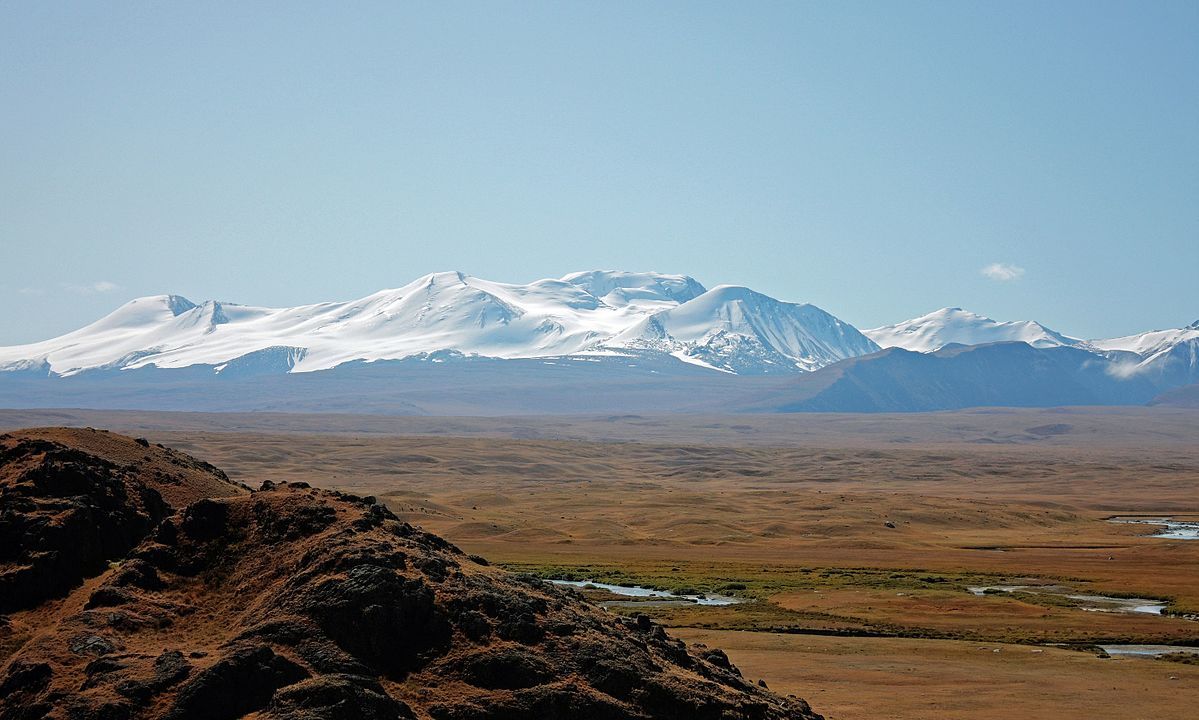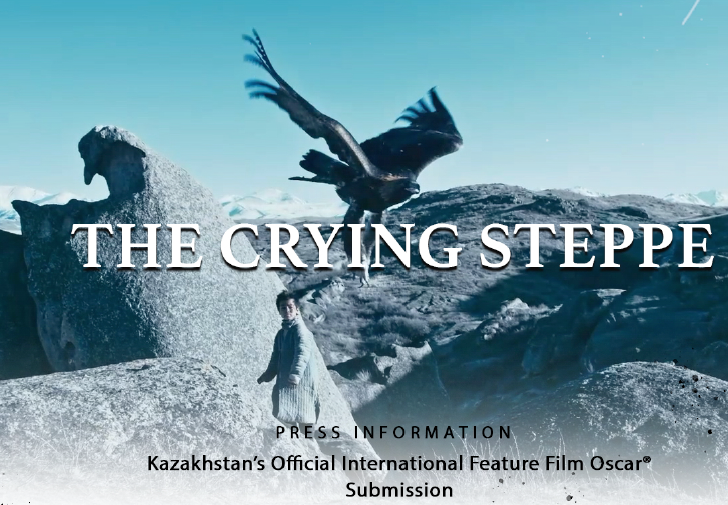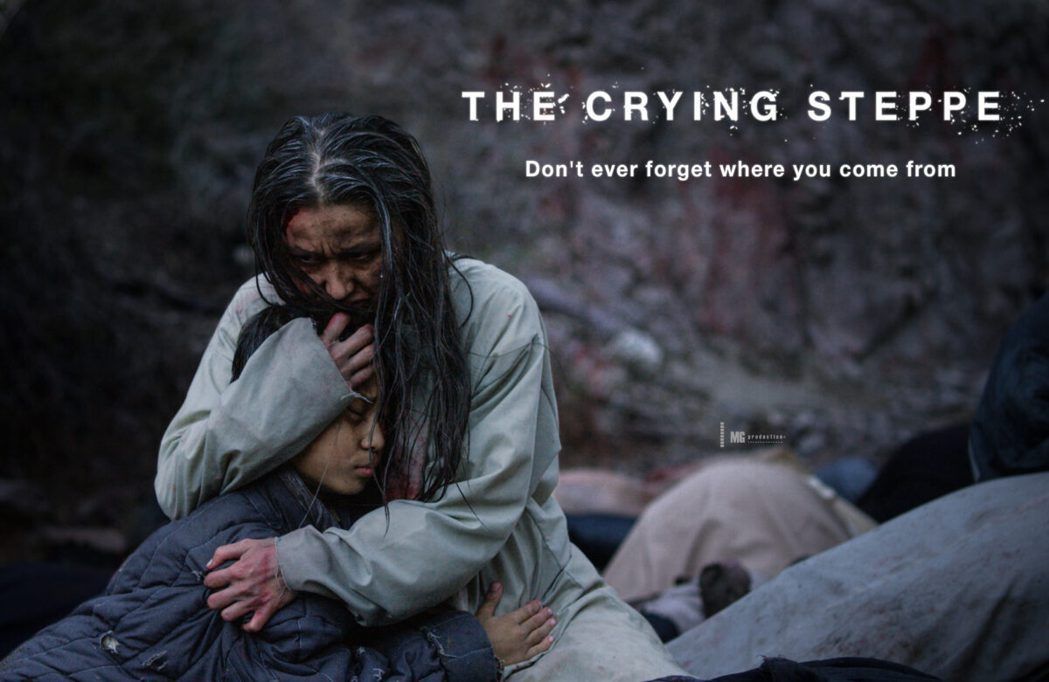
關注人與環境的互動,期望以人地關係的角度紀錄世界。曾獲雲門流浪者計畫、時報報導文學獎、鍾肇政報導文學獎。文章散見轉角國際、上下游副刊等。自從在蒙古和中亞流浪一段時間後,對遊牧文化產生濃厚興趣。peiliao1120[@]gmail.com
The Weeping Grassland: The History of the Kazakh Famine and Bloody Migration in the 1930s
This article was published in Corner International on 2022/06/29
We climbed up the frosty road, and the snow on the distant mountains was like icing lightly sprinkled on the cake, and the texture of the mountains could still be seen. Almaty in Kazakhstan has started to snow in October, but it is still not enough. At this time, there are still many climbers who come to climb several famous peaks in the Tianshan Mountains, located at the junction of Kazakhstan and Kyrgyzstan, over 3,000 meters .
Our purpose is not mountaineering, but to find Kazakh mountain birds. Kazakh friend Madina said that it is legal to cross the border control post and go up to look for eagles. There are indeed, and they are rare bearded vultures , gliding silently across the mountains in front of us, flashing a silver-black light.
"In the Soviet era, people would have crossed the Tianshan Mountains and headed to Kyrgyzstan." The 28-year-old Medina did not experience the Soviet era. She was talking about the memories described by her great-grandparents and grandparents.
"What are you doing over there?" I asked curiously.
"Flee," she said coldly. "Kazakhstan has experienced many famines in its history, the most severe one in the 1930s, after the Soviet Union began to implement collectivization policies. Many people fled to China and Mongolia, as well as in Kyrgyzstan."

Relics of the Soviet era can be seen everywhere in Kazakhstan. We had just passed a research institute left over from the Soviet era, the Tianshan Observatory built in 1957, and a scientific station for studying cosmic rays. Giant radio telescopes, silver domes housing open telescopes, rusty crane equipment, broken iron windows and stacked rows of discarded tires. If it weren't for the dog chained in the corner and barking at us, one would think this place had been abandoned long ago.
After Stalin came to power, the Soviet Union actively implemented a planned economy, also known as the five-year plan (thirteen times in total), with the goal of catching up with the economic level of advanced countries in a very short period of time and moving from agriculture to industrialization. The observatory is already a product of the later period. The first five-year plan that had a profound impact on Kazakhstan began in 1928. It implemented a policy of agricultural collectivization, compulsorily expropriated livestock, land and property of herdsmen, and incorporated herdsmen into collective farms for modern farming.
The conflict between nomadic and sedentary cultures
It is not the first time that the grassland peoples have collided with the Russian regime in the north. As early as the 18th century during the Russian Empire, several tsars promoted agricultural policies, believing that settled agriculture was a more advanced and more civilized activity than nomadic pastoralism. In order to expand agricultural land, a large number of Slavic peoples have always moved to the grassland for reclamation. Especially in the mid-19th century, after Russia abolished serfdom, a large number of Russian and Ukrainian farmers entered the Kazakh grassland.
As a nomadic people, the Kazakhs migrate with the seasons and live by water and grass. At the end of autumn, cattle and sheep are slaughtered as food in winter, reducing the number of livestock that need to be grazed; in spring and summer, livestock give birth and continue to graze on the grassland. Wherever there is war, they flee in different directions. Migration is the old line of Kazakhs.
In the 15th century, the Kazakh Khanate , an alliance of nomadic tribes, was established. It is mainly composed of three major tents, also known as Yuzi . Yuzi was further divided into several ministries, and the ministries were divided into several clans. But in the 17th century, the Kazakh Khanate began to be oppressed by various forces, including Russia in the north, Junggar in the east, and Kalmykia in the west. Zhongyuzi and Xiaoyuzi sought protection from Russia, while Dayuzi was captured by the Junggar and later annexed by the Qing Empire.
Russia has repeatedly interfered in the grassland regime. After a large number of farmers entered Kazakhstan and reclaimed the grassland as farmland, many Kazakhs crossed the Altai Mountains from present-day Kazakhs or Xinjiang and migrated to present-day western Mongolia. This is why Bayan-Uriel in western Mongolia Gai Province (Bayan-Olgii) is home to many Kazakhs, making it the largest minority-inhabited area in Mongolia.
But the resilience of the Kazakhs is not only reflected in their good mobility, but also in their semi-nomadic lifestyle. They are good at changing their way of life with changes in grassland environment, climate, political economy. As more and more settled people appeared on the grasslands, some herdsmen began to reduce their nomadism, and traded with the settled people through trade and renting pastures. However, this change in lifestyle has also changed the eating habits of the Kazakhs. They have gradually changed from eating milk and meat to taking grains as their staple food, which has virtually deepened the Kazakhs' dependence on grains.

The First Five-Year Plan and the Great Famine of the 1930s
In 1928, Stalin implemented the first five-year plan in the republics of the Soviet Union, implemented a collectivization policy, increased agricultural production, sold it abroad, and used these funds to develop industry. Filipp Goloshchyokin, then First Secretary of the Party Committee of the Kazakh Autonomous Soviet Socialist Republic, vigorously promoted the collectivization policy of agriculture and animal husbandry, and local governments began to confiscate herdsmen's livestock.
However, the implementation status varies from region to region. In some places, the herdsmen are concentrated and "nomadic collective farms" are established in some places. Kazakhs continue to live in yurts and live a nomadic life; There is not enough time to carry out phased collectivization policies based on local characteristics, and more violent methods are used to subdue herdsmen, especially the "rich herdsmen" officially recognized. To avoid expropriation, many Kazakhs drove their livestock to the border mountains to hide, or because they were unwilling to hand over their livestock, they simply killed themselves to eat.
The Kazakh grassland is a place prone to drought. Originally, when nomadic, it was necessary to look for water everywhere. However, after it was planned as a collectively settled agricultural area, due to the lack of sufficient funds to establish a water supply network system, no crops could be grown in many areas, and various places began to appear. Food shortage situation. In areas planned for collective grazing, animals died of illness because they did not adapt to collective life. Without sufficient food, the Kazakhs could only consume dwindling cattle and sheep as food.
Karaganda in the north-central part of Kazakhstan, in order to exploit coal mines and develop industries, the government moved many exiled farmers and prisoners to work here, which also increased the pressure on the food supply of the Kazakh grasslands, and the already scarce food was sent to Karaganda. Even though local officials and scholars had warned of the possibility of famine, the continued delivery of food to the region highlighted the Soviet regime's desire to develop industry at all costs. Beginning in 1930, the largest famine in history occurred in the Kazakh grasslands. More than 1.5 million people died, accounting for a quarter of the population at the time. It also caused tens of thousands of Kazakhs to flee to Xinjiang, China.

This reminds me of my friend S from Kazakhs in Xinjiang who once described the story about his great-grandfather fleeing from Kazakhs in the Soviet era to Xinjiang, China.
"Grandfather and brother Zeng crossed the Altai Mountains. It was snowing at that time. I don't know where to pick up a gold nugget the size of a dog's head. There are gold mines in the Altai Mountains. Maybe they are lucky. Later they melted the gold and used two small gold bars. Change two horses, and hide the rest of the gold under the saddle. But the gold is too big, so they hide it in the belt two by one, and wear it in tatters on the road, all the way to Xinjiang, Wusu . They dare not take it out, so they keep hiding , use it when there is a little law and order.”
No matter how big the gold is, how to hide it. I am really curious how the escape route is to cross the Altai Mountains? If you spread out the map, you will find that if you want to flee from Kazakhstan to Xinjiang, there are three relatively flat roads to choose from. From north to south, they are the Irzys River Valley, which can be passed from the northern Kazakh city of Semey . To the Altai region of northern Xinjiang; the Emin River Valley can go all the way from central Kazakhstan to the Tacheng region of northern Xinjiang; and finally the Ili River Valley can go all the way from the south of Kazakhstan to Yining, the capital of the current Ili Kazakh Autonomous Prefecture.
These three routes are also the traditional nomadic routes of the Kazakhs. The Altai Mountains are the northernmost of these three routes, at the junction of Mongolia, Kazakhstan and Xinjiang, China. Why did great-grandfather S, who was from Zhongyuzi and lived near Semiy, take a long detour from the Altai Mountains all the way south to Wusu City?
"There's no way out. Not long after the famine, violent control began, bloodshed." S said.

Behind the Bloody Border Control: Smuggling, Fleeing, and the Great Game
Milk tea plays an extremely important role for nomadic Kazakhs and is one of the indispensable daily diets, so the source of tea is extremely important. But during the famine years of the first few years of the Soviet planned economy, there was a shortage of meat and grains, not to mention the need for tea bricks that came from trade. A lot of tea smuggling began to appear on the border between Kazakhstan and China, which became a big problem enough to shake the Soviet regime.
Smuggling also equates to a hidden possibility of rebellion. Kazakhs and China follow the traditional nomadic route of the Kazakhs and have a close kinship relationship. Of course, there are also cross-border connections of religious organizations. Since the Russian Red Army (later the Soviet Union) took control of Russia, there are actually remnants of the Russian White Army everywhere, and the White Army will unite with other ethnic groups in various places, including the Kazakhs, to launch raids on the Soviet regime. There are many armed resistance groups in nomadic areas, but the reasons for their formation are complex, including religious issues caused by the Soviet Union’s order to close mosques, as well as confrontations against the Soviet Union’s forced collectivization rule.
With the rise of the Republic of China and the Soviet Union, pan-Turkic cross-border organizational networks also emerged. For example, the Turkestan Liberation Organization, which was active from 1916 to 1934, was called Basmachestvo in the Soviet Union, which means bandits in Russian. There are many ethnic groups participating in the movement, each with its own purpose, including Slavic ethnic groups such as Kazakhs, Uyghurs, Kyrgyzs , Dungans, and Uyghurs. Suppressed by the Soviet Union at that time, many members of the organization fled to Xinjiang. Therefore, in addition to nomadic herdsmen who do not want to be merged into the collectivization system, the large-scale migration of people on the border between Kazakhstan and China also includes hungry refugees under famine and rebels looking for hiding places.
In addition to domestic complications, the international situation was also the reason why the Soviet Union began to resort to violent border controls. The border between Kazakhstan and China was originally an important international stage for the great game in Central Asia. Except that the Republic of China was in a state of warlord separatism at that time, the warlords in charge of Xinjiang could turn against any country at any time, which was not good for the Soviet Union; The Asian puppet government; and Britain's espionage activities on the Sino-Indian border may threaten the Soviet Union at any time.
The large population flow did indeed pose a threat to the Soviet regime. After the failure of the plan to stop the outflow of people and attract people back to the Soviet Union, the Soviet Union used nationalist ideas to portray cross-border refugees as spies and traitors, and began to resort to terrorist violence. , shot and killed fleeing people at the border. From 1930 to 1932, there were bloody and violent incidents on the border every day. In order to avoid the border control soldiers, Kazakh refugees began to take small roads. At that time, tens of thousands of people fled to Xinjiang, but only about 200,000 people succeeded.

"The Weeping Prairie": Remembering the Great Famine of the 1930s
Metina and I walked down the frosty road, the sound of cracking machines echoing in our ears. The mountain is very quiet, except for the barking of dogs outside the gate of Tianshan Observatory. I really can't imagine how people fled across the border mountains in the midst of hunger and snow.
"I heard that when I was fleeing, there were corpses on the roadside." Madina said she couldn't imagine.
In the 1930s, after the Great Famine in Kazakhstan, the Kazakh population in the territory was once lower than that of the Russians. It was not until the 1990s, after Kazakh independence, that the Kazakh population surpassed the Russians. Medina is a Kazakh of the younger generation. She said that the world knows about the famine that happened in Ukraine during the Soviet era, but people don’t know that it happened in Kazakhstan. Even in Kazakhstan, these histories only began to appear after 2010. There have been many studies and discussions, and it is also one of the historical events that shaped the identity of the modern young generation of Kazakhs.
Medina suggested that I can look at Sarah Cameron, a professor of history who studies the Soviet Union, "The Hungry Steppe: Soviet Kazakhstan and the Kazakh Famine, 1921-1934" published in 2018, and there are indeed a few on the Internet. Most of the Kazakh famine studies are almost all published after 2010.
After returning to Taiwan, a year later, at the beginning of 2021, Madina and S sent me messages one after another, saying that there was a movie "The Crying Steppe" (The Crying Steppe ) in Kazakhstan that was released recently, which described the Kazakhstan in the 1930s. The historical truth behind the famine has aroused great repercussions in the Kazakh community, and Kazakhstan promoted this film for the nomination of Best International Film at the 93rd Academy Awards.
I clicked on the movie trailer on YouTube, the falconer and the golden eagle being released, the burning yurt, the gunshots echoing in the valley, piles of corpses and blood. The movie poster reads:
Don't ever forget where you come from. (Don't ever forget where you come from)
"The Weeping Grassland" is a historical memory that contemporary Kazakhs, no matter which country they are in, try to remember.

Further reading:
Kazakhstan's Oscar© 2020 Entry for Best Feature: 'The Crying Steppe' by Marina Kunarova
This article was published in Zhuanjiao International . There are more historical archives and photos in the link of the original article. Welcome to click to watch directly.
感謝大家閱讀到這裡,如果你喜歡也支持這篇作品,歡迎按拍手鍵或是直接贊助支持,當然也非常歡迎留言互動喔~~
Comment…